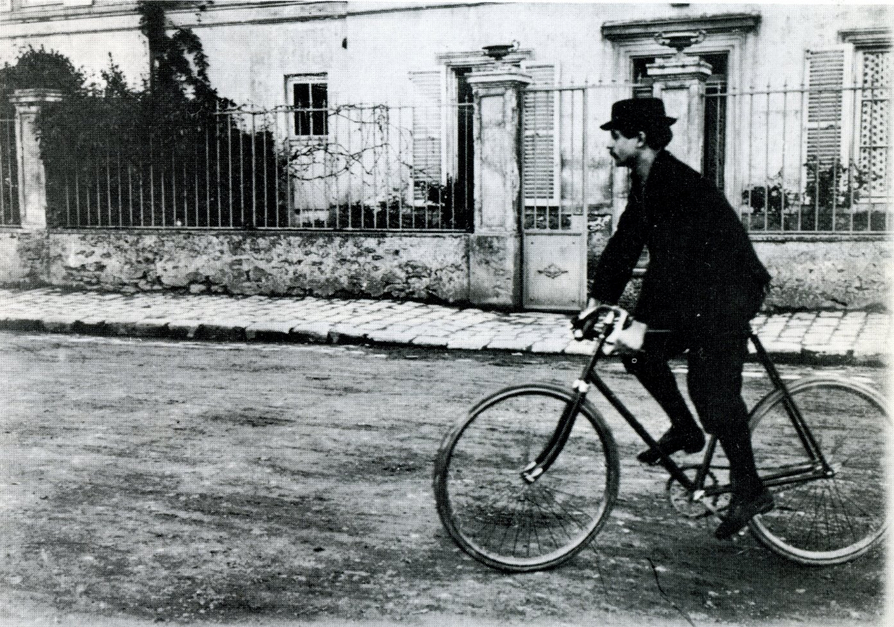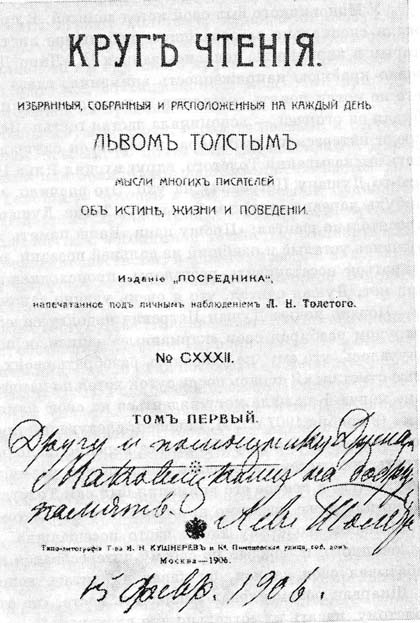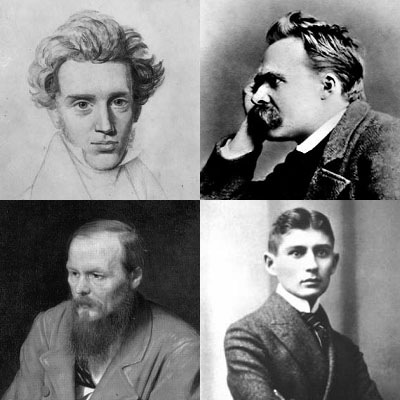|
Index Of Philosophy Articles (A–C)
__TOC__ ',-," * 'Pataphysics" 0–9 * 14th Dalai Lama * 16 Questions on the Assassination * 1649 in philosophy * 1658 in philosophy * 17th-century philosophy * 18th-century philosophy * 1919 United States anarchist bombings * 1922 in philosophy * 1926 in philosophy * 1962 in philosophy * 1972 in philosophy * 1973 in philosophy * 1974 in philosophy * 1975 in philosophy * 1976 in philosophy * 1977 in philosophy * 1978 in philosophy * 1979 in philosophy * 1980 in philosophy * 19th-century philosophy * 20th-century philosophy * 20th-century Western painting A * A-series and B-series * A Buyer's Market * A Calendar of Wisdom * A Conflict of Visions * A Contribution to the Critique of Political Economy * A Defence of Common Sense * A Defense of Abortion * A Dissertation on Liberty and Necessity, Pleasure and Pain * A Few Words on Non-Intervention * A Fórmula de Deus * A fortiori argument * A General View of Positivism * A Grief Observed * A Guide for the Perplexed * A Happy ... [...More Info...] [...Related Items...] OR: [Wikipedia] [Google] [Baidu] |
'Pataphysics
Pataphysics (french: 'pataphysique) is a "philosophy" of science invented by French writer Alfred Jarry (1873–1907) intended to be a parody of science. Difficult to be simply defined or pinned down, it has been described as the "science of imaginary solutions". Introduction 'Pataphysics was a concept expressed by Jarry in a mock-scientific manner, with undertones of spoofing and quackery, as expounded in his novel ''Exploits and Opinions of Dr. Faustroll, Pataphysician''. Here, Jarry toyed with conventional concepts and interpretations of reality. Another attempt at a definition interprets 'pataphysics as an idea that "the virtual or imaginary nature of things as glimpsed by the heightened vision of poetry or science or love can be seized and lived as real". Jarry defines 'pataphysics in a number of statements and examples, including that it is "the science of imaginary solutions, which symbolically attributes the properties of objects, described by their virtuality, to their ... [...More Info...] [...Related Items...] OR: [Wikipedia] [Google] [Baidu] |
1978 In Philosophy
1978 in philosophy Events * ''The Philosopher's Annual'' is established. Publications * '' Critical Inquiry'', Special Issue: On Metaphor (Volume 5, Number 1) ** Ted Cohen, "Metaphor and the Cuiltivation of Intimacy"Excerpt ** Paul de Man, "The Epistemology of Metaphor"Excerpt ** Donald Davidson, "What Metaphors MeanExcerpt ** Wayne C. Booth, "Metaphor as Rhetoric: The Problem of Evaluation"Excerpt ** Karsten Harries, "Metaphor and Transcendence"Excerpt ** David Tracy, "Metaphor and Religion: The Test Case of Christian Texts"Excerpt ** Richard Shiff, "Art and Life: A Metaphoric Relationship"Excerpt ** Howard Gardner and Ellen Winner, "The Development of Metaphoric Competence: Implications for Humanistic Disciplines"Excerpt ** Paul Ricoeur, "The Metaphorical Process as Cognition, Imagination, and Feeling"Excerpt ** Afterthoughts on Metaphor ** W.V. Quine, "A Postscript on Metaphor"Excerpt ** Don R. Swanson, "Toward a Psychology of Metaphor"Excerpt ** Karsten Harries, "T ... [...More Info...] [...Related Items...] OR: [Wikipedia] [Google] [Baidu] |
A Dissertation On Liberty And Necessity, Pleasure And Pain
''A Dissertation on Liberty and Necessity, Pleasure and Pain'' is a philosophical pamphlet by Benjamin Franklin, published in London in 1725 in response to ''The Religion of Nature Delineated''. It argues that an omnipotent, benevolent God is incompatible with notions of human free will and morality. The second portion of the pamphlet goes on to formulate that all motivations are derived from pain and that pain is met with an equal amount of pleasure. He then concludes that this means that man cannot be superior to animals because we are all equal in God's eyes. Franklin acknowledges how offensive this idea would be to the reader, and refuted it later. The point of the pamphlet seems to follow Calvinism. Franklin was raised Calvinist as a child but in his teenage years became a Deist, arguing that Calvinism cannot logically be a moral way to live. In 1779, Franklin came to disagree with the points he printed in ''Dissertation'' and burned all the copies he possessed of the pamphl ... [...More Info...] [...Related Items...] OR: [Wikipedia] [Google] [Baidu] |
A Defense Of Abortion
"A Defense of Abortion" is a moral philosophy essay by Judith Jarvis Thomson first published in ''Philosophy & Public Affairs'' in 1971. Granting for the sake of argument that the fetus has a right to life, Thomson uses thought experiments to argue that the fetus's right to life does not override the pregnant woman's right to have jurisdiction over her body, and that induced abortion is therefore morally permissible. Thomson's argument has many critics on both sides of the abortion debate,E.g. (chap. 8), (chap. 7), and (chap. 4) on the anti-abortion side; (pp. 52–53), , (p. 78), and on the pro-choice side. yet it continues to receive defense. Thomson's imaginative examples and controversial conclusions have made "A Defense of Abortion" perhaps "the most widely reprinted essay in all of contemporary philosophy". Overview of the essay The violinist In "A Defense of Abortion", Thomson grants for the sake of argument that the fetus has a right to life ... [...More Info...] [...Related Items...] OR: [Wikipedia] [Google] [Baidu] |
A Defence Of Common Sense
"A Defence of Common Sense" is a 1925 essay by philosopher G. E. Moore. In it, he attempts to refute absolute skepticism (or nihilism) by arguing that at least some of our established beliefs about the world are absolutely certain, so they can be legitimately called "facts". Moore argues that these beliefs are common sense. Summary In section one, he argues that he has certain knowledge of a number of truisms, such as "My body has existed continuously on or near the earth, at various distances from or in contact with other existing things, including other living human beings", "I am a human being", and "My body existed yesterday". In section two, he argues that there is a distinction between mental facts and physical facts. He says there is no good reason to believe, as many philosophers of his time did, that every physical fact is logically dependent on mental facts, or that every physical fact is causally dependent on mental facts. An example of a physical fact is "The mantelpie ... [...More Info...] [...Related Items...] OR: [Wikipedia] [Google] [Baidu] |
A Contribution To The Critique Of Political Economy
''A Contribution to the Critique of Political Economy'' (german: Zur Kritik der Politischen Ökonomie) is a book by Karl Marx, first published in 1859. The book is mainly a critique of political economy achieved by critiquing the writings of the leading theoretical exponents of capitalism at that time: these were the political economists, nowadays often referred to as the classical economists; Adam Smith (1723–90) and David Ricardo (1772–1823) are the foremost representatives of the genre. Significance Much of the ''Critique'' was later incorporated by Marx into his magnum opus, ''Capital'' (Volume I), published in 1867, and the ''Critique'' is generally considered to be of secondary importance among Marx's writings. This does not apply, however, to the Preface of the ''Critique''. It contains the first connected account of one of Marx's main theories: the materialist conception of history, and its associated "base and superstructure" model of society, which divides human so ... [...More Info...] [...Related Items...] OR: [Wikipedia] [Google] [Baidu] |
A Conflict Of Visions
''A Conflict of Visions'' is a book by Thomas Sowell. It was originally published in 1987; a revised edition appeared in 2007. Sowell's opening chapter attempts to answer the question of why the same people tend to be political adversaries in issue after issue, when the issues vary enormously in subject matter and sometimes hardly seem connected to one another. The root of these conflicts, Sowell claims, are the "visions", or the intuitive feelings that people have about human nature; different visions imply radically different consequences for how they think about everything from war to justice. The rest of the book describes two basic visions, the "unconstrained" and "constrained" visions, which are thought to capture opposite ends of a continuum of political thought on which one can place many contemporary Westerners, in addition to their intellectual ancestors of the past few centuries. The book could be compared with George Lakoff's 1996 book ''Moral Politics'', which aims t ... [...More Info...] [...Related Items...] OR: [Wikipedia] [Google] [Baidu] |
A Calendar Of Wisdom
''A Calendar of Wisdom'' (russian: Круг чтения, ), also known as ''Path of life'', ''A Cycle of Readings'' or ''Wise Thoughts for Every Day'', is a collection of insights and wisdom compiled by Leo Tolstoy between 1903 and 1911 that was published in three different editions. An English translation by Archibald J. Wolfe of the first Russian edition, which was organized by subject, was published in 1919. An English translation of the second Russian edition, which was organized by calendar date, was begun in 1911 as a monthly serial but abandoned after the first volume. The first translation of the entire yearly cycle, but which omitted some of the individual readings, was made by Peter Sekirin and published in 1997. The book, whose title is literally translated as ''Circle of Reading'', was described by Tolstoy as "a wise thought for every day of the year, from the great philosophers of all times and all people" which he himself would consult daily for the rest of his life. T ... [...More Info...] [...Related Items...] OR: [Wikipedia] [Google] [Baidu] |
A Buyer's Market
''A Buyer's Market'' is the second novel in Anthony Powell's twelve-novel series, ''A Dance to the Music of Time ''A Dance to the Music of Time'' is a 12-volume ''roman-fleuve'' by English writer Anthony Powell, published between 1951 and 1975 to critical acclaim. The story is an often comic examination of movements and manners, power and passivity in Eng ...''. Published in 1952, it continues the story of narrator Nick Jenkins with his introduction into society after boarding school and university. The book presents new characters, notably the painter Mr. Deacon, female acquaintance Gypsy Jones and artist Ralph Barnby, as well as reappearances by Jenkins' school friends Peter Templer, Charles Stringham and Kenneth Widmerpool. The action takes place in London high society in the late 1920s. At a dinner party there is discussion of the Earl Haig statue. At an after party given by Mrs.Andriadis Nick meets his former professor, Sillery and observes industrialist Magnus Donn ... [...More Info...] [...Related Items...] OR: [Wikipedia] [Google] [Baidu] |
A-series And B-series
In metaphysics, A series and B series are two different descriptions of the temporal ordering relation among events. The two series differ principally in their use of tense to describe the temporal relation between events and the resulting ontological implications regarding time. John McTaggart introduced these terms in 1908, in an argument for the unreality of time. They are now commonly used by contemporary philosophers of time. History Metaphysical debate about temporal orderings reaches back to the ancient Greek philosophers Heraclitus and Parmenides. Parmenides thought that reality is timeless and unchanging. Heraclitus, in contrast, believed that the world is a process of ceaseless change, flux and decay. Reality for Heraclitus is dynamic and ephemeral. Indeed, the world is so fleeting, according to Heraclitus, that it is impossible to step twice into the same river. McTaggart's series McTaggart distinguished the ancient conceptions as a set of relations. According to M ... [...More Info...] [...Related Items...] OR: [Wikipedia] [Google] [Baidu] |
20th-century Western Painting
20th-century Western painting begins with the heritage of late-19th-century painters Vincent van Gogh, Paul Cézanne, Paul Gauguin, Georges Seurat, Henri de Toulouse-Lautrec, and others who were essential for the development of modern art. At the beginning of the 20th century, Henri Matisse and several other young artists including the pre-cubist Georges Braque, André Derain, Raoul Dufy and Maurice de Vlaminck, revolutionized the Paris art world with "wild", multi-colored, expressive landscapes and figure paintings that the critics called Fauvism. Matisse's second version of '' The Dance'' signified a key point in his career and in the development of modern painting. It reflected Matisse's incipient fascination with primitive art: the intense warm color of the figures against the cool blue-green background and the rhythmical succession of the dancing nudes convey the feelings of emotional liberation and hedonism. Initially influenced by Toulouse-Lautrec, Gauguin, and other late-19 ... [...More Info...] [...Related Items...] OR: [Wikipedia] [Google] [Baidu] |
20th-century Philosophy
Contemporary philosophy is the present period in the history of Western philosophy beginning at the early 20th century with the increasing professionalization of the discipline and the rise of Analytic philosophy, analytic and continental philosophy. The phrase "contemporary philosophy" is a piece of technical terminology in philosophy that refers to a specific period in the history of Western philosophy (namely the philosophy of the 20th and 21st centuries). However, the phrase is often confused with modern philosophy (which refers to an earlier period in Western philosophy), postmodern philosophy (which refers to some philosophers' criticisms of modern philosophy), and with a non-technical use of the phrase referring to any recent philosophic work. Professionalization Process Professionalization is the social process by which any trade or occupation establishes the group Norm (sociology), norms of conduct, acceptable wikt:qualification, qualifications for membership of the pr ... [...More Info...] [...Related Items...] OR: [Wikipedia] [Google] [Baidu] |


